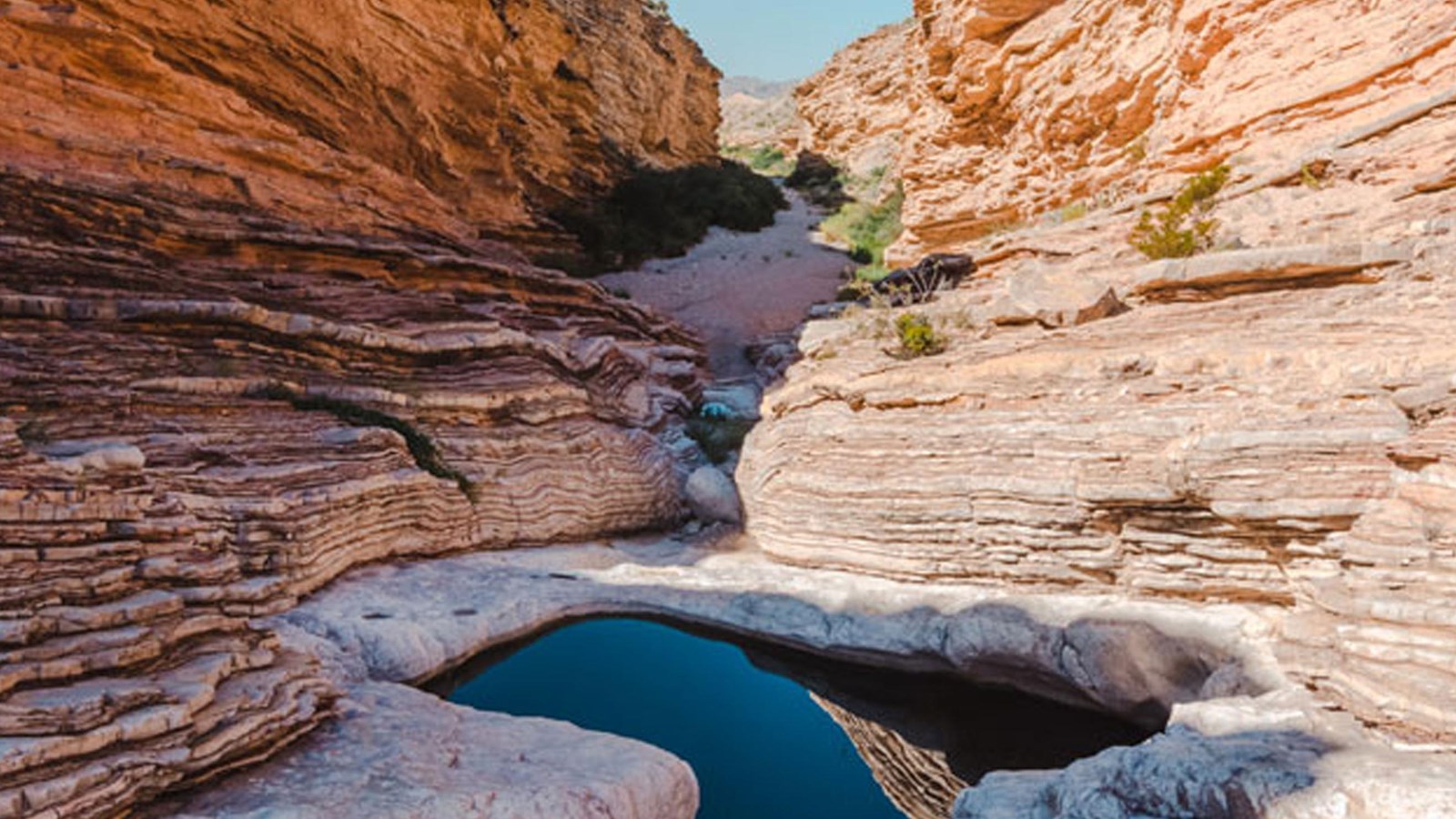Last updated: September 22, 2023
Place
Ernst Tinaja

NPS
Scenic View/Photo Spot, Trailhead
Trail Information
Roundtrip Distance to Ernst Tinaja: 1 mile
Elevation Change: 20' ft.
Average Walking Time: 1 hour
Dogs and other pets are not allowed on any trails in the park.
This popular feature at the mouth of a limestone canyon is noted for three things: vibrant orange swirling striations in the rocks, fossils of giant oysters, and the Ernst Tinaja itself - a 13-foot natural rock pool. The word tinaja (pronounced "tin-AH-ha") is Spanish for "large earthen jar" and in Big Bend refers to natural water holes, usually formed by erosion.
A small parking spot marks the trailhead. The trail to the tinaja is 1/2 mile each way, and provides access into a small canyon lined with spectacular limestone geology. Walk up the canyon to the tinaja carved into the creekbed. The tinaja holds water year round. Be very careful along the edge. Desert animals seeking water are often lured to the steep walled tinaja, only to fall in and drown when they cannot climb out the smooth sides.
The trailhead is located approximately 5 miles along the rugged, primitive Old Ore Road. The Old Ore is extremely rocky and challenging to all but the most capable vehicles. Do NOT attempt to reach this trail without a rugged high-clearance four-wheel drive vehicle with sturdy tires. Do not attempt this road with a regular car, minivan, or motorhome.
Accessibility
The hike to Ernst Tinaja involves a 5 mile drive along the rugged, primitive, Old Ore Road, and then a walk of 1/2 mile each way. The hike is mostly flat, but consists of deep sand with stretches of bedrock. To access the best viewing of the tinaja requires scrambling on and over some smooth limestone boulders and ledges.
Hike Smart
Bring plenty of water!
Carry 1 liter of water per person per hour that you plan to hike. The importance of carrying enough water in this hot, dry climate cannot be overstated!
Eat
Your body needs food for energy and salts and electrolytes to replace what it's losing from perspiration. The dry climate at Big Bend means that sweat often evaporates almost instantly; your body is likely losing lots of moisture and salts without you even realizing it. Eat plenty of salty snacks to keep your body's salt-to-water ratio in balance.
Sun protection
Carry sunscreen and use it liberally. Hats are also strongly recommended. It may seem strange to wear long-sleeved shirts and pants in hot weather, but many hikers choose lightweight, breathable clothing which covers their arms and legs to protect themselves from the sun.
Don't leave people behind
If you're hiking in a group, make sure the person in the back always has someone to help.
Be aware of wildlife
Keep an eye out for snakes, and remember to maintain a safe distance between yourself and all wildlife. Animals in the park are wild and should never be approached, harassed, or fed.
